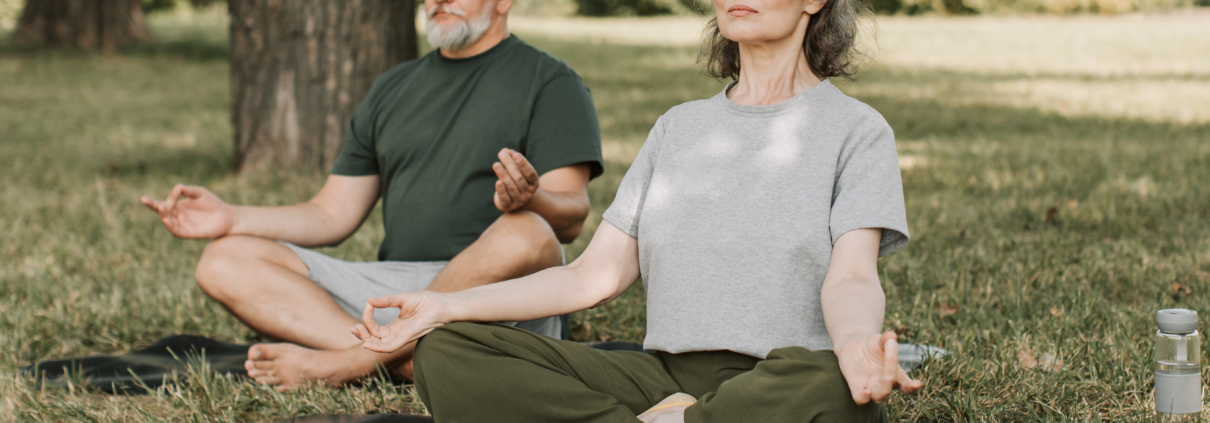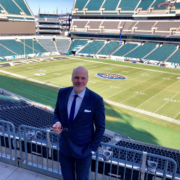Lifestyle changes for better brain health
Dr. Gary Small knows all about brain health. As professor and chair of psychiatry at Hackensack University Medical Center, he oversees all professional and administrative activities within the behavioral health care transformation service at Hackensack Meridian Health. Prior to this gig, Dr. Small was a professor of psychiatry and biobehavioral sciences and a Parlow-Solomon professor on aging at the David Geffen School of Medicine at UCLA, director of the Division of Geriatric Psychiatry at the Semel Institute for Neuroscience and Human Behavior, and director of the UCLA Longevity Center. Now 72, Dr. Small is known for his public work in promoting the practice of psychiatry and innovative research on brain health, aging, and Alzheimer’s disease. He is a co-inventor of the first positron emission tomography (PET) scanning method that provides images in living people with Alzheimer’s disease with abnormal brain proteins, amyloid plaques, and tau tangles. Dr. Small has authored more than 500 scientific works and received numerous honors, including the American Psychiatric Association Weinberg Award in Geriatric Psychiatry. What’s more, Scientific American magazine named him one of the world’s top 50 innovators in science and technology. He is the author of 14 popular books, including a bestseller titled, The Memory Bible. (Dr. Small also recently spoke at a NAN workshop; to access the archived event, click here.) Earlier this year, BrainWise Managing Editor Matt Villano sat down with Dr. Small to discuss the most important aspects of brain health, and how aging adults can take better care of themselves for the future. What follows is an edited transcript of their conversation.
BrainWise: If we had to categorize lifestyle activities, what are some of the top things people can do to improve their brain health?
Dr. Gary Small: I would say number one is physical exercise. Mental exercise and challenging the brain is very important, but the scientific evidence is even more compelling that regular aerobic or cardiovascular conditioning protects your brain too. You don’t have to become a triathlete to achieve that. Some studies show that just a half hour of brisk walking each day will lower a person’s risk for Alzheimer’s disease. And it’s not just cardiovascular conditioning, which improves circulation to the brain, it increases levels of endorphins which lift a person’s mood and improves issues with pain. Physical exercise also increases levels of brain-derived neurotrophic factor, which is a protein that helps our brain cells communicate more effectively. Strength training appears to provide additional benefits. It may be that when you’re lifting weights or using resistance bands, it provides an additional cognitive challenge to get your form correct, or it may be that other factors are involved. We know that as people age, they are at risk for developing a condition called sarcopenia, which is loss of lean muscle mass, which is a predictor of shorter life expectancy. So that’s another area that strength training helps us in. A third component of physical exercise would be balance training. Older people are at risk for falls, and if you fall, you can hit your head and head trauma is not good for your brain health. [Literature such as this article, this article, and this article suggest that] people who hit their heads and lose consciousness for an hour or more [may have] greater risk for developing dementia or cognitive decline that interferes with their ability to care for themselves.
Brainwise: How can PET scanning help patients become better acquainted with and better in control of their own health?
Dr. Small: It’s a complicated issue because any test or technology that you’re going to use, you have to ask the questions, ‘How is it going to be helpful? What is the potential harm? What is the potential benefit?’ I have worked in this area for a number of years. In 2004, [PET scans were] used to differentiate Alzheimer’s disease from Frontotemporal Dementia (FTD). Today, PET scans are used for all sorts of other things. A PET scanner is essentially like a Geiger counter, it measures radioactivity. When a patient gets one, we inject the patient with a radioactive chemical marker that is taken up by the brain. The marker enables us to see how the brain cells are using sugar, which gives you a measure of cellular function. Of course, there is the risk that if you get these scans, it’s going to cause anxiety in [some] patients. I’m not really a big fan of telling people to go out and get a scan or get genetic testing [unless it’s medically necessary], because it could have negative effects. I am a big fan of encouraging everyone to live a healthy lifestyle, to see their doctor if they have cognitive concerns and get tested and find out where they are and whether these scans are [necessary] or not.
BrainWise: You mentioned genetic risk. What role do genetics play in all of this?
Dr. Small: I always want to encourage people to not be discouraged by their family history. One thing to keep in mind is that the age at onset of a cognitive decline tends to be consistent within families. So if you have a grandparent who developed dementia at 95, the chances are that’s more age-related, and whatever forgetfulness you’re experiencing in your forties is likely unrelated. Another factor, and we’ve done these studies, others have done these studies, is you find that even if somebody has a genetic risk, even if you’re an identical twin to someone who has dementia, that doesn’t necessarily mean you’re going to develop it, that if you live a healthy lifestyle, you can do better. We’ve done studies of people with that genetic risk for Alzheimer’s disease, and we find that if they exercise more, if they don’t have too much overweight or obesity in midlife, that they have less Alzheimer’s disease in their brain when we do brain PET scans.
BrainWise: Can someone be too cautious about protecting their brain?
Dr. Small: It’s never too early and it’s never too late to start protecting your brain. We see very good results in older adults, and one of the advantages of starting early is that you don’t have to change habits so much. It’s one thing to educate people about what’s good for their brain health, it’s another to get them to change. And we’re not just talking about becoming a weekend warrior and playing basketball once a month on Sundays; we’re talking about daily habits that have an impact. And we know from other research [such as Dr. Wendy Wood’s work; see this and this] that to convert a behavior into a habit takes a bit of time and takes some motivation and some consistency. It’s also important to develop a program that is not overwhelming. Not long ago, my wife (Gigi Vorgan) and I wrote a book called, Two Weeks to a Younger Brain. If we called it, ‘Two Years to a Younger Brain,’ I doubt anyone would read it, but the point was, two weeks is enough time to take baby steps to begin to change your life habits, your lifestyle habits, so that it becomes easy to protect your brain every day.
BrainWise: So how can someone jump-start momentum to make a change?
Dr. Small: It’s incremental. It starts with what we’re doing right now, educating people. If you let people know that ordering broccoli as your side dish rather than French fries is going to be better for your brain, you’re more inclined to do that. And part of that education is not just about physical exercise and mental exercise and healthy diet, but it’s also about how to get enough sleep, how to manage stress better, how to avoid experiences like head trauma that will worsen your brain health. If you have high blood pressure or high cholesterol, just taking the medicines for those illnesses can extend your life expectancy and lower your risk for dementia. Many of the books I’ve written outline these programs in some detail. There are many ways to get there. Sometimes it’s reading a book, sometimes it’s checking out a website. Other times it’s meeting with a [trained] professional [such as a psychologist or a neuropsychologist, a dietician, or a nutritionist, as the case may be]. Also, there are apps. I remember reading an article several years ago, it’s much easier to break into training with an app than with a person who will kind of give you a hard time if you don’t show up.
BrainWise: How much exercise is too much?
Dr. Small: When I see patients, I not only go through the standard medical interview and assessment and find out about their history, medications, illnesses, etc., but I ask about their lifestyle. I specifically ask, ‘How much exercise are you getting? How are you doing it? What holds you back?’ And I work with them to try to design something that makes sense for them. Let’s say somebody’s a very busy executive and they don’t have time to go to the gym. Well, what about parking your car a little bit further from the building and walking briskly to the office? Maybe take a few flights of stairs. We always think of it in terms of starting low and going slow. You don’t want people to injure themselves, but you want them to be able to build up in a gradual way. And if you can get the program going so that they get these endorphin rushes, the so-called endorphin high that elevates your mood, that’s very helpful in solidifying those exercise habits because people look forward to it. They know they feel better after they exercise. They have less pain after they exercise. I had a trainer who would always say, ‘Motion is the lotion,’ because it lowers inflammation. Exercise is really something that’s individualized and tailored to the person’s lifestyle. If you make it too daunting, they’re not going to do it.
In the aerobic area, exercise could be almost anything that gets your heart to pump oxygen nutrients to your brain. It could be swimming, jogging, or walking. Part of what determines a specific type of exercise is what’s convenient for you, what you enjoy, what kind of injuries you’ve experienced. For example, if you have a bad ankle, jogging may not be good for you, but you could probably swim. If you have a bad shoulder, maybe a treadmill might be better for you. I think that those kinds of considerations will come into play as someone tries to evaluate what form of exercise is best.
BrainWise: What about social activity? How can that impact the brain, and how much of that should people be emphasizing?
Dr. Small: It really needs to be individualized. My wife and I wrote a book about that called, Snap! Change Your Personality in 30 Days, and it brings up a couple issues. First, despite the clinical lore, it is possible to change your personality traits in a positive way to improve your health and improve your life. Personality is also important when it comes to brain health. If somebody is an introvert, they are not so keen on being so social. They come home at the end of the day, and they like to wind down by curling up next to a fire and reading a good book. An extrovert wants to talk about their day and kind of deprogram all experiences in that way. And so, an introvert wouldn’t necessarily want to spend so much time or need to spend so much social time. But a certain amount of social interaction, I think, is important for everyone, whether they’re an extrovert or an introvert, and it has several aspects that will affect brain health. If you’re having conversations, that’s a form of mental exercise and mental challenge, and that’s going to be good for your neural circuits. If you have conversations with friends who are supportive, that will lower your stress levels and that’s going to help your brain health. Loners don’t do well as they age. We saw this really impact people during the pandemic, among people of all ages. Isolation can lead to depression, and depression is a risk factor for cognitive decline.
BrainWise: Finally, what about diet? Can that really affect brain health?
Dr. Small: Diet is significant. Watching your calories, particularly in midlife, is key. The fat around the abdomen is inflammatory. Many of us think that heightened inflammation drives brain disease as we age, so watching out for that is important. The average western diet includes too much Omega 6 fat compared to Omega 3, and we want the Omega 3. Consuming at least seven servings of fresh fruits and vegetables, which lower oxidative stress in the brain and the heart, is wise. Processed foods and refined sugars, which can increase the risk for diabetes, [also may increase] your risk for dementia [as outlined in this CNN article about a recent study on this point]. I was just reflecting about diet this morning when I woke up. I got a reasonable night’s sleep and I felt pretty good getting up. And I thought, ‘Well, what did I eat for dinner last night?’ I had Mediterranean food. We hear a lot about the Mediterranean diet, and I felt a lot better than I did the day before. On that day, I had just returned from a business trip to Chicago where a lot of the airplane food, all that salt and more of a Western diet didn’t help me sleep so well and didn’t make me feel so great. People can experience subjective differences depending on diet. And you can talk to a lot of people who have changed their diet and notice subjectively they feel better. I think that’s one of the things I’d like to emphasize about taking these baby steps to improve your lifestyle. If you do it, you’re going to notice it’s not just the long-term effects on your brain health, but you’re going to start feeling better right away, which reinforces the habits.
BrainWise: Five years from now, what do you think we’ll be talking about when we talk about everyday ways that we can improve brain health?
Dr. Small: Well, I’m hoping that we’ll have more incentives for people to live healthier, because I know how hard it is to get people to change. We don’t want to force them to change, but we need carrots, not sticks, to motivate them.
This article has been factchecked by members of NAN’s Publications Committee. For more about that process, click here.









